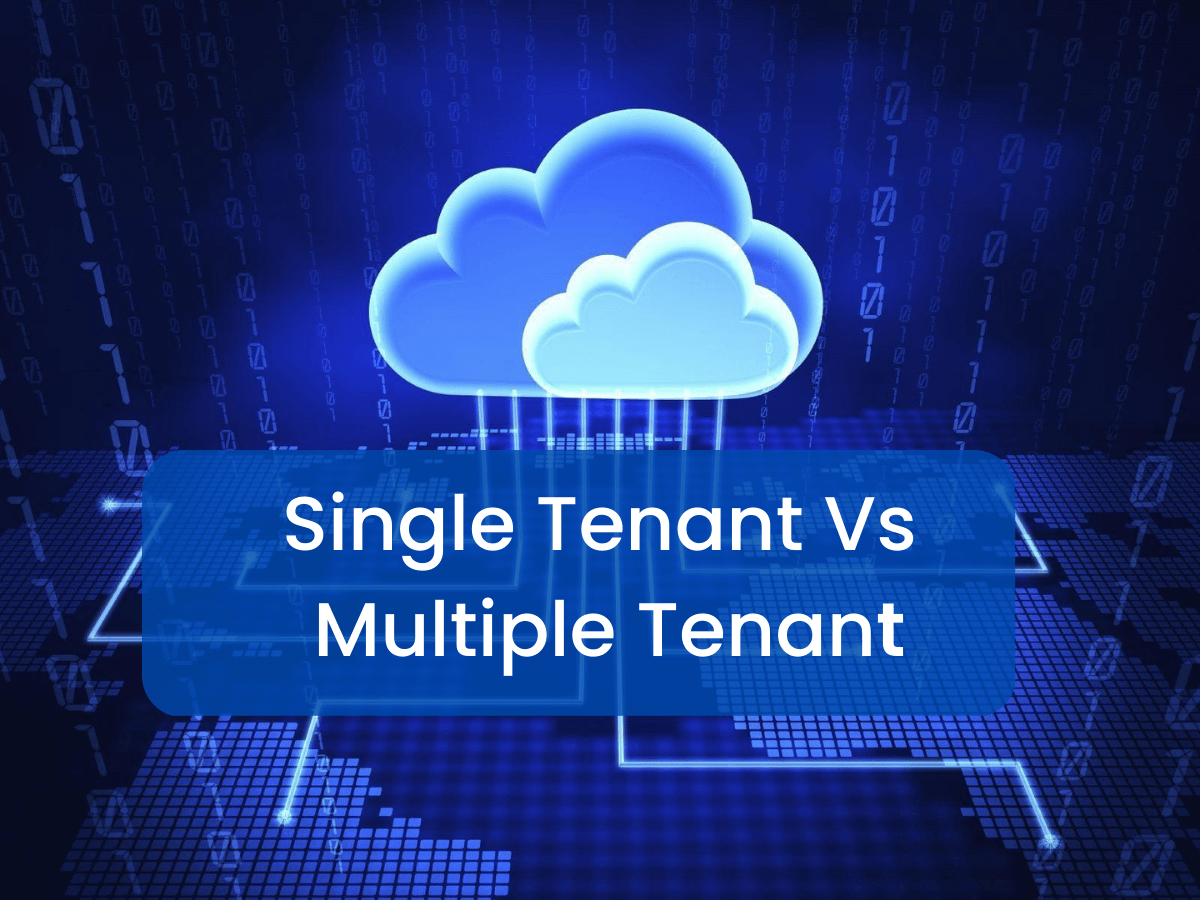Single Tenant vs. Multiple Tenant: Understanding the Key Differences
Choosing the right tenancy model is crucial for any software architecture. While building an architecture, one has so many interrogatives within it. If you are the one with dilemma in picking up the right tenant for your business, then, this blog is dedicated for you! Let’s understand the differences between a single tenant and multiple tenants.
What is a tenant?
First, what is a tenant and what does it mean? Let’s understand it first.
If you are building the software application and making it available to the customers. The set of people who sign up to utilize your environment are referred as the tenants of the system.
The users of your software. It’s like how you make your application available to your customers.
In our example, multi-tenant will be used. Likewise, single-tenant or multiple-tenant is chosen based upon the purpose behind the application. Fundamentally, Tenants are decided based upon the business model.
Single Tenant Vs Multiple Tenant
Both have their own pros and cons. It’s good to know the two sides of making a better decision. There are a number of factors to look upon.
Single Tenant
Single tenancy is a tenancy model where each customer or user gets their own unique instance of the application. This means that each customer has their own database, server, and environment that is completely isolated from other customers.
Consider, in the healthcare industry they handle sensitive data. Furthermore, they also need to meet HIPPA requirements while dealing with patient data. So ever hospitals need to maintain their own data.
Single tenant kind of architecture is suitable for industries where much privacy and security are needed for customer data. For example, banking and healthcare industry.
Who can be the users?
We discussed that it depends on the industrial sector other than that large scale business, enterprises with unlimited users are the meant for this architecture
Pros:
- Increased security: Isolated environment provides tight security to the data
- Customization: User can customize it based upon their needs and requirements.
- Better control: better control of the environment promotes the best user experience
- Easy Migration: Data Migration is less complicated in single tenant environment
Cons:
- Higher costs: Single tenancy is typically more expensive than multiple tenancy as each customer requires their own dedicated resources.
- Scalability: Scalability can be a challenge here as each customer requires their own resources, which can lead to technical complexity.
Also read: Getting Started With Amazon SageMaker Studio
Multiple Tenancy
Multiple tenancy is a tenancy model where multiple customers or users share the same instance of the application. This means that multiple customers share the same database, server, and environment.
To understand it better, consider Microsoft 365, All the documents, mails are stored in a shared space. Users have the access to handle their own as well the shared data. With the help of authentication, Microsoft 365 prevents one’s data from others.
Multi-tenant is best for most customers facing applications like e-commerce industry, gaming sector, etc., where much privacy and security are not needed.
Who can be the users?
Start-ups, medium-scale businesses with 10 – 300 users on multiple locations are the perfect fit for this architecture.
Pros:
- Lower costs: Multiple tenancy is typically less expensive thus it shares the same resources.
- Scalability: Multiple tenancy is easily scalable when compared with single tenancy
- Easier management: Managing a single environment is easily doable.
Cons:
- Decreased security: Since multiple customers share the same environment, the risk of data breaches is high.
- Less customization: Customization facility is less so the user need demand their own specifications.
- Limited control: Multiple tenancy gives customers limited control over their environment, which can lead to a less optimal user experience.
- Complicated Migration: Data Migration is highly complicated in a multi-tenant environment.
Which is the best Option?
Actually, there is no competition between these two architectures! Both are unique and built for different purposes. You need not to stressed with choosing the best one, instead, think about your industry, business scale, kind of data you are handling and then decide.
There are n number of factors like use cases, maintenance, security, cost, etc., to look at. Think deep and map it out. You will definitely choose the right one for your business.
How Continuum innovations can help you?
Continuum Innovations is a professional cloud managed service provider that offers cloud solutions to various industries. Our Experts possess high skill set in cloud architecture, so you need not to dive into these kinds of complex things and focus more on your business prospects.
We listen to all your needs and requirements and come up with a solution that fits the best for you. We have happy clients around the globe, and you can also add up with us.


